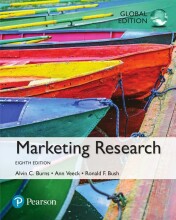Summary: International Economics And Business
- This + 400k other summaries
- A unique study and practice tool
- Never study anything twice again
- Get the grades you hope for
- 100% sure, 100% understanding
Read the summary and the most important questions on International Economics and Business
-
Lecture , Chapter 1: The International Economy & Globalization
This is a preview. There are 21 more flashcards available for chapter 11/11/2020
Show more cards here -
International economy concerns the flow of?
- Commodities
- Services
- Productive factors.
-
6 Identifiable areas of the Conduct of Trade are:
- Exchange rates
- Commercial policies
- Different domestic policies
- Statistical data
- Relative immobility of productive factors
- Marketing considerations.
-
Forums for trade & Monetary issues:
- World Trade Organization (WTO)
- International Monetary Fund (IMF)
- The European Union EU / NAFTA
- World Bank
- Group of Industrial Countries G5/G7/G10
- The United Nations Conference on Trade & Development (UNCTAD)
- Organization for economic cooperation and development (OECD)
-
What do Trading Partners?
- The international movement of goods and / or services
- Labor
- Business enterprise
- Investment funds
- Technology
-
What forces are driving globalization?
- Technical talent
- Multilateral trade negotiations
- Continuing liberalization of trade and investment
- Widespread liberalization of investment transactions
- Development of international financial markets.
-
Trade Patterns & Openness
Openness measures how important international trade is within a nation's economy by using the percentage of all imports, exports, and GDP of a country. -
The Law of Comparative Advantage states:
- Citizens of each nation must gain.
- All nations must spend more of their time and resources doing those things in which they have a relative advantage.
- If a good can be obtained more economically through trade.
- Trade for it instead of producing it domestically.
- Use the available resources to obtain all goods for the lowest possible costs.
-
Traits of open economies are:
- Produce a larger joint output.
- Competition of innovation and production.
- International competition
- Domestic producers: strong incentive to improve the quality of their products.
- Weakens monopolies.
- More competition.
- More firm turnover.
- Improvements for the industry.
-
Economic growth rates are related to:
- Openness to trade
- Education
- Communications infrastructure.
-
The fallacies (misconcepties) of globalization are:
- Import reduces employment
- Export promotes growth and employment
- All import restrictions will save jobs and promote more employment.
- Higher grades + faster learning
- Never study anything twice
- 100% sure, 100% understanding































